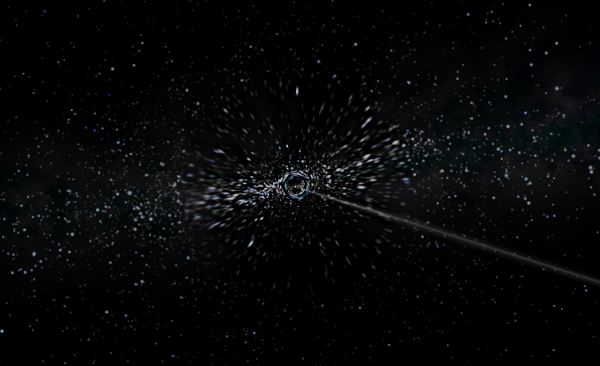BY LETTER
Stargate
Technology > Application > Transportation > Interstellar Transport
Technology > Application > Metric Engineering
Technology > Technology Type or Material > Space-Time Engineering
Technology > Technology Levels > Transapientech / Godtech / Clarketech
Technology > Application > Metric Engineering
Technology > Technology Type or Material > Space-Time Engineering
Technology > Technology Levels > Transapientech / Godtech / Clarketech
Alternative term for a traversable wormhole |
 Image from Steve Bowers |
Wormholes come in two main kinds, traversable and comm guage. A stargate is the former type, open to travel by physical objects including, if the wormhole is large enough, entire sophonts or ships of sophonts.
Traversable Wormholes
These use a modified Morris-Thorne-Kuhfittig metric. These are very large: traversable wormholes are consistently 327 Astronomical Units (A.U.s) in radius from the surrounding region of effectively flat space to the wormhole mouth, so must be located far from any star or planet. This kind of wormhole uses a relatively small quantity of negative (exotic) ANEC-violating energy, and is the kind of wormhole often referred to as a 'stargate'.Hayward (Comm-gauge) Wormholes
 Image from Steve Bowers | |
| Comm-gauge wormholes are much smaller than traversable wormholes, and only allow the passage of information (usually in the form of modulated em-radiation). | |
Comm-gauge wormholes are much smaller but use a much larger amount of negative (exotic) ANEC-violating energy. They are only useful for transmitting electromagnetic beams containing data, but this data transfer is very important to the existence of civilisation in the Terragen Sphere. These are not stargates, except to beings who can pass through them as a data stream.
(More details: Communication-Gauge Wormholes).
Related Articles
Appears in Topics
Development Notes
Text by Stephen Inniss and Steve Bowers
Initially published on 30 June 2010.
Initially published on 30 June 2010.






